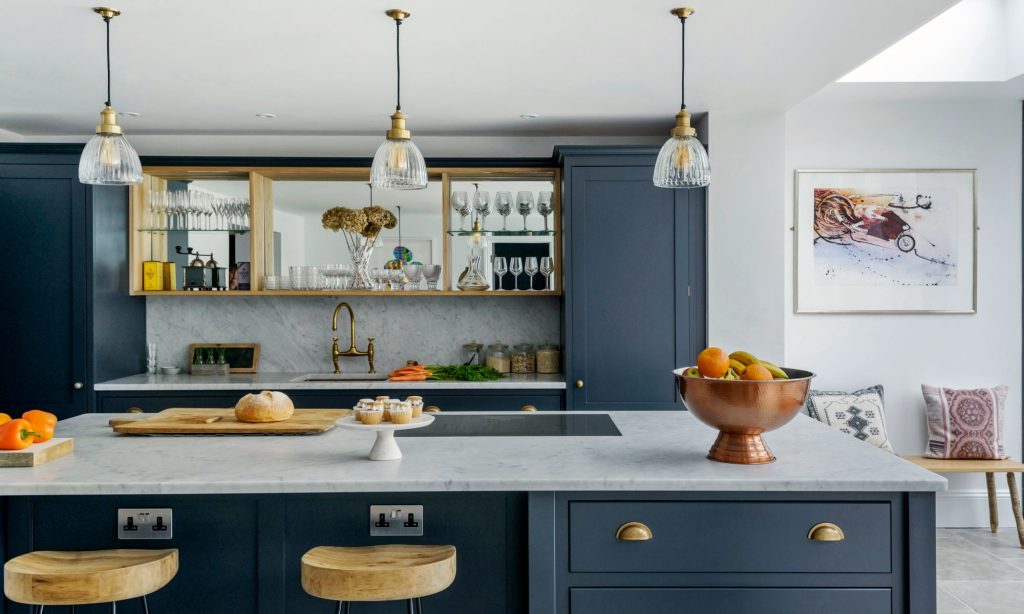Linoleum has long been celebrated for its durability, eco-friendliness, and affordability, but its versatility often goes unnoticed. In the realm of kitchen design, linoleum emerges as a dynamic choice, offering an array of possibilities to redefine kitchen fronts and elevate the aesthetic appeal of this vital space. Gone are the days when linoleum was solely associated with utilitarian flooring; today, its transformative potential extends to cabinetry, countertops, and beyond. One of the most compelling features of linoleum lies in its diverse range of colors, patterns, and textures. Whether you envision a sleek, minimalist kitchen or a vibrant, eclectic space, linoleum can accommodate your design aspirations with ease. From classic marbles and wood grains to bold geometric motifs and abstract designs, the options are virtually limitless. This versatility allows homeowners to infuse their kitchens with personality and style, creating a space that reflects their unique tastes and preferences. Beyond its aesthetic appeal, linoleum boasts exceptional practicality, making it an ideal choice for kitchen fronts. Its non-porous surface is naturally resistant to moisture, stains, and scratches, ensuring longevity and ease of maintenance.

Unlike other materials that may require regular sealing or refinishing luxor kitchen, linoleum maintains its beauty with minimal upkeep, making it a practical and cost-effective solution for busy kitchens. Additionally, its resilience to heat and UV exposure makes it suitable for both indoor and outdoor applications, further expanding its versatility in kitchen design. Moreover, linoleum offers unparalleled sustainability credentials, making it an environmentally conscious choice for eco-conscious homeowners. Composed of natural materials such as linseed oil, cork powder, and wood flour, linoleum is biodegradable and renewable, making it a preferred alternative to synthetic materials derived from fossil fuels. Its production process also generates minimal waste and emissions, aligning with the principles of sustainable living and responsible consumption. By incorporating linoleum into their kitchen fronts, homeowners can reduce their environmental footprint without compromising on style or performance. In addition to its aesthetic and environmental benefits, linoleum excels in terms of versatility in application.
While traditionally used for flooring, linoleum can be seamlessly integrated into various elements of kitchen design, including cabinetry, countertops, backsplashes, and even furniture. Its flexibility allows for custom fabrication and creative expression, enabling designers to craft bespoke solutions that cater to the unique requirements of each space. Whether employed as a statement feature or a subtle accent, linoleum adds depth and character to kitchen fronts, transforming them into focal points of visual interest. Furthermore, linoleum offers exceptional value for money, making it accessible to a wide range of homeowners. Its competitive pricing relative to other materials such as stone, wood, or laminate makes it an attractive option for budget-conscious renovation projects. Moreover, its durability and longevity ensure a high return on investment, as linoleum kitchen fronts retain their beauty and functionality for years to come. By choosing linoleum, homeowners can achieve the look they desire without compromising on quality or affordability, making it a versatile and practical choice for modern kitchens. Its diverse range of colors, patterns, and textures allows for endless design possibilities, while its durability, eco-friendliness, and affordability make it a practical choice for homeowners. Whether used for cabinetry, countertops, or other elements of kitchen design, linoleum offers unparalleled versatility and value, making it a standout option in the realm of kitchen renovation and remodeling.
